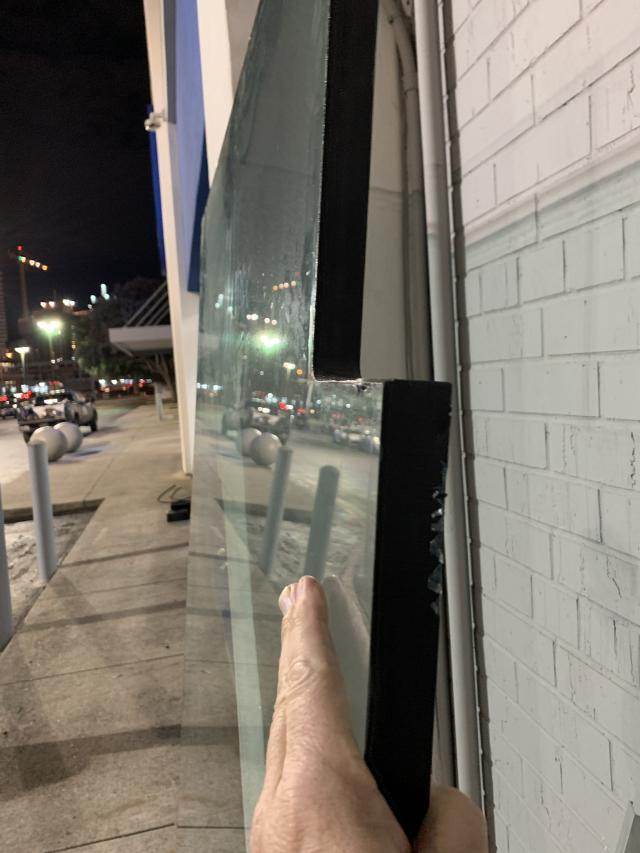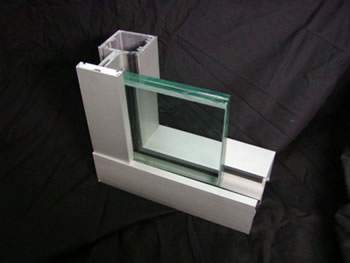So you might be thinking, what’s the deal with glass? We see it everywhere, from the windows in our homes to the screens of our smartphones. But have you ever wondered about the differences between the different types of glass? In particular, what sets apart the glass in a typical house from the seemingly impenetrable bulletproof glass? Well, buckle up because we’re about to shed some light on this glassy topic and uncover the fascinating disparities between these two types of glass. Get ready to have your mind blown, metaphorically speaking of course!

This image is property of metrotinttx.com.
Composition
Regular Glass
Regular glass, also known as annealed glass or float glass, is composed primarily of silica, which is derived from sand. It is created by heating a mixture of silica, soda ash, and limestone to a high temperature, which melts the ingredients together. The molten glass is then shaped into sheets by floating it on a bath of molten tin and slowly cooling it.
Bullet Proof Glass
Bulletproof glass, on the other hand, is a specialized type of glass designed to withstand bullets and other high-impact forces. It is typically made using layers of materials such as glass, polycarbonate, and even laminates. These layers are bonded together under high pressure and heat to create a strong and durable composite.
Strength
Regular Glass
Regular glass is relatively strong, but it is not specifically designed to withstand high-impact forces. It can break when subjected to significant pressure, such as the impact of a heavy object or strong impact force.
Bullet Proof Glass
Bulletproof glass, as the name suggests, is specifically engineered to provide protection against bullets and other projectiles. It is designed to absorb the impact energy of a bullet and distribute it across the multiple layers, preventing penetration. This makes it significantly stronger and more resistant to impact than regular glass.

This image is property of cibulletproof.com.
Resistance to Impact
Regular Glass
Regular glass is not designed to withstand significant impact forces. Even a relatively small impact can cause regular glass to shatter and break into sharp, potentially dangerous fragments. This lack of resistance to impact makes regular glass unsuitable for applications where safety and security are of utmost importance.
Bullet Proof Glass
In contrast, bulletproof glass is highly resistant to impact, including bullets and other projectiles. It is capable of absorbing and dispersing the force of impact, preventing penetration and reducing the risk of injury. This makes it a crucial component in applications where protection from gunfire, explosions, or other high-impact events is required.
Thickness
Regular Glass
Regular glass is typically available in varying thicknesses, ranging from a few millimeters to several centimeters. The thickness required depends on the specific application and the level of strength and safety desired.
Bullet Proof Glass
Bulletproof glass typically consists of multiple layers of glass and other materials, which are bonded together to create a composite. The total thickness of bulletproof glass can vary depending on the level of protection required. Thicker glass and additional layers provide increased resistance to projectiles.

This image is property of www.bulldogdirect.com.
Layers
Regular Glass
Regular glass is usually a single layer of silica-based material, providing transparency and basic protection from the elements. It is commonly used in windows, doors, and other applications where visual clarity is important.
Bullet Proof Glass
Bulletproof glass is made up of multiple layers of various materials, such as glass, polycarbonate, and laminates, each with its own specific properties. The combination of these layers helps to absorb and dissipate the impact from bullets or other projectiles, enhancing its resistance to penetration.
Manufacturing Process
Regular Glass
The manufacturing process of regular glass involves melting a mixture of silica, soda ash, and limestone at a high temperature. The molten glass is then shaped into sheets by floating it on a bath of molten tin and gradually cooling it, resulting in a solid piece of glass.
Bullet Proof Glass
The production of bulletproof glass involves more complex manufacturing processes. The layers of glass, polycarbonate, and other materials are bonded together under high pressure and heat to create a strong and durable composite. This process ensures that the layers are securely attached, providing optimal protection against high-impact forces.

This image is property of i.ytimg.com.
Price
Regular Glass
Regular glass is generally more affordable compared to bulletproof glass due to its simpler manufacturing process and lower material costs. The price of regular glass can vary depending on the size, thickness, and additional features such as coatings or treatments.
Bullet Proof Glass
Bulletproof glass, being a specialized and highly engineered product, is significantly more expensive than regular glass. The additional layers, materials, and complex manufacturing process contribute to the higher cost. The level of protection required and other specifications also affect the overall price.
Applications
Regular Glass
Regular glass finds its application in various residential and commercial settings. It is commonly used for windows, doors, and architectural elements in homes, offices, and retail spaces. Additionally, regular glass is used for decorative purposes, such as mirrors, glass tabletops, and shelving.
Bullet Proof Glass
Bulletproof glass is primarily used in applications that require enhanced security and protection. It is commonly employed in banks, government buildings, armored vehicles, and high-security facilities. Additionally, bulletproof glass can be utilized in residential settings for windows and doors in areas prone to high crime rates or the need for heightened security.

This image is property of cdn-dfhlm.nitrocdn.com.
Transparency
Regular Glass
Regular glass offers excellent transparency, allowing natural light to pass through while providing a clear view of the surroundings. Its ability to transmit light makes it an essential component in architectural designs, ensuring a bright and visually appealing environment.
Bullet Proof Glass
Bulletproof glass, despite its multi-layer composition, still maintains a high degree of transparency. However, the number of layers and materials utilized may slightly affect the clarity. Manufacturers often strive to balance the need for protection with the desire for unimpeded visibility.
Weight
Regular Glass
The weight of regular glass depends on its size, thickness, and specific composition. It is generally heavier than other materials used in window and door manufacturing, such as plastics or aluminum. However, the weight of regular glass is still manageable and can be supported by standard frames and hardware.
Bullet Proof Glass
Bulletproof glass, with its multiple layers and added materials, is significantly heavier than regular glass. The additional weight poses challenges in terms of installation and support, requiring sturdy frames and appropriate structural considerations to bear the load.
